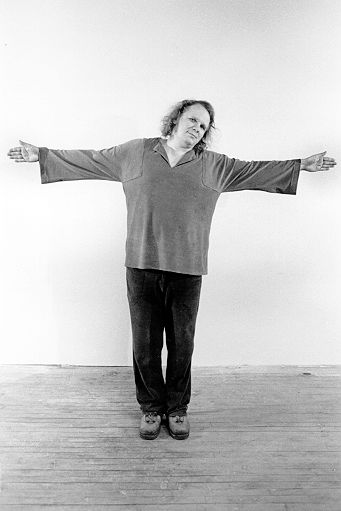At a certain point in college, I started doing all my word processing using Adobe FrameMaker. I won’t go into why I did this – I was indulging any number of idiosyncrasies then, many of them similarly unreasonable – but I did, and I kept using FrameMaker for most of my writing for a couple of years. Even in the happiest of times, there weren’t many people who used FrameMaker; in 2001, Adobe decided to cut their losses and stop supporting the Mac version of FrameMaker, which only ran in Classic mode anyway. I now have an Intel Mac that won’t run my old copy of FrameMaker; I now have a couple hundred pages of text in files with the extension “.fm” that I can’t read any more. Could I convert these to some modern format? Sure, given time and an old Mac. Is it worth it? Probably not: I’m pretty sure there’s nothing interesting in there. But I’m still loathe to delete the files. They’re a part, however minor, of a personal archive.
This is a familiar narrative when it comes to electronic media. The Institute has a room full of Voyager CD-ROMs which we have to fire up an old iBook to use, to say nothing of the complete collection of Criterion laser discs. I have a copy of Chris Marker’s CD-ROM Immemory which I can no longer play; a catalogue of a show on Futurism that an enterprising Italian museum put out on CD-ROM similarly no longer works. Unlike my FrameMaker documents, these were interesting products, which it would be nice to look at from time to time. Unfortunately, the relentless pace of technology has eliminated that choice.
 Which brings me to the poet bpNichol, and what Jim Andrews’s site vispo.com has done for him. Born Barrie Phillip Nichol, bpNichol played an enormous part in the explosion of concrete and sound poetry in the 1960s. While he’s not particularly well known in the U.S., he was a fairly major figure in the Canadian poetry world, roughly analogous to the place of Ian Hamilton Finlay in Scotland. Nichol took poetry into a wide range of places it hadn’t been before; in 1983, he took it to the Apple IIe. Using the BASIC language, Nichol programmed poetry that took advantage of the dynamic new “page” offered by the computer screen. This wasn’t the first intersection of the computer and poetry – as far back as 1968, Dick Higgins wrote a FORTRAN program to randomize the lines in his Book of Love & War & Death – but it was certainly one of the first attempts to take advantage of this new form of text. Nichol distributed the text – a dozen poems – on a hundred 5.25” floppy disks, calling the collection First Screening.
Which brings me to the poet bpNichol, and what Jim Andrews’s site vispo.com has done for him. Born Barrie Phillip Nichol, bpNichol played an enormous part in the explosion of concrete and sound poetry in the 1960s. While he’s not particularly well known in the U.S., he was a fairly major figure in the Canadian poetry world, roughly analogous to the place of Ian Hamilton Finlay in Scotland. Nichol took poetry into a wide range of places it hadn’t been before; in 1983, he took it to the Apple IIe. Using the BASIC language, Nichol programmed poetry that took advantage of the dynamic new “page” offered by the computer screen. This wasn’t the first intersection of the computer and poetry – as far back as 1968, Dick Higgins wrote a FORTRAN program to randomize the lines in his Book of Love & War & Death – but it was certainly one of the first attempts to take advantage of this new form of text. Nichol distributed the text – a dozen poems – on a hundred 5.25” floppy disks, calling the collection First Screening.
bpNichol died in 1988, about the time the Apple IIe became obsolete; four years later, a HyperCard version of the program was constructed. HyperCard’s more or less obsolete now. In 2004, Jim Andrews, Geof Huth, Lionel Kerns, Marko Niemi, and Dan Waber began a three-year process of making First Screening available to modern readers; their results are up at http://vispo.com/bp/. They’ve made Nichol’s program available in four forms: image files of the original disk that can be run with an Apple II emulator, with the original source should you want to type in the program yourself; the HyperCard version that was made in 1992; a QuickTime movie of the emulated version playing; and a JavaScript implementation of the original program. They also provide abundant and well thought out criticism and context for what Nichol did.
Looking at the poems in any version, there’s a sweetness to the work that’s immediately winning, whatever you think of concrete poetry or digital literature. Apple BASIC seems cartoonishly primitive from our distance, but Nichol took his medium and did as much as he could with it. Vispo.com’s preservation effort is to be applauded as exemplary digital archiving.
But some questions do arise: does a work like this, defined so precisely around a particular time and environment, make sense now? Certainly it’s important historically, but can we really imagine that we’re seeing the work as Nichol intended it to be seen? In his printed introduction included with the original disks, Nichol speaks to this problem:
As ever, new technology opens up new formal problems, and the problems of babel raise themselves all over again in the field of computer languages and operating systems. Thus the fact that this disk is only available in an Applesoft Basic version (the only language I know at the moment) precisely because translation is involved in moving it out further. But that inherent problem doesn’t take away from the fact that computers & computer languages also open up new ways of expressing old contents, of revivifying them. One is in a position to make it new.
 Nichol’s invocation of translation seems apropos: vispo.com’s versions of First Screening might best be thought of as translations from a language no longer spoken. Translation of poetry is the art of failing gracefully: there are a lot of different ways to do it, and in each way something different is lost. The QuickTime version accurately shows the poems as they appeared on the original computer, but video introduces flickering discrepancies because of the frame rate. With the Javascript version, our eyes aren’t drawn to the craggy bitmapped letters (in a way that eyes looking at an Apple monitor in 1983 would not have been), but there’s no way to interact with the code in the way Nichol suggests because the code is different.
Nichol’s invocation of translation seems apropos: vispo.com’s versions of First Screening might best be thought of as translations from a language no longer spoken. Translation of poetry is the art of failing gracefully: there are a lot of different ways to do it, and in each way something different is lost. The QuickTime version accurately shows the poems as they appeared on the original computer, but video introduces flickering discrepancies because of the frame rate. With the Javascript version, our eyes aren’t drawn to the craggy bitmapped letters (in a way that eyes looking at an Apple monitor in 1983 would not have been), but there’s no way to interact with the code in the way Nichol suggests because the code is different.
Vispo.com’s work is quite obviously a labor of love. But it does raise a lot of questions: if Nichol’s work wasn’t so well-loved, would anyone have bothered preserving it like this? Part of the reason that Nichol’s work can be revived is that he left his code open. Given the media he was working in, he didn’t have that much of a choice; indeed, he makes it part of the work. If he hadn’t – and this is certainly the case with a great deal of work contemporary to his – the possibilities of translation would have been severely limited. And a bigger question: if vispo.com’s work is to herald a new era of resurrecting past electronic work, as bpNichol might have imagined that his work was to herald a new era of electronic poetry, where will the translators come from?



